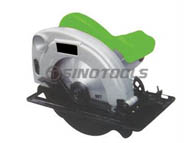

Dec. 25, 2020
How To Use a Circular Saw Safely And Correctly
A circular saw is probably one of the most impressive power tools in your workshop, so it's important to know how to make the most of it.
If a rope saw is used, keep all cables and wires away from the cutting path.
Never move your eyes to the cut - that's how you lose your fingers.
If cutting is done between two pressure points, the blade may be squeezed (known as "binding") during the cutting process, which may cause recoil.
When cutting, make sure that the workpiece is supported correctly. For smaller workpieces, use worktables and fixtures, and for larger workpieces, use an extension table or roller support.
Make sure that the excess wood (scrap surface) is free to fall off after cutting, and that your "storage surface" is firmly in place.
Wear safety glasses and a dust mask.
Your saw blade should be in good working condition and sharp before you try to cut anything.
Most saws are designed for right-handed people, so if you are left-handed, you need to be extra alert for chips and sawdust. The waste usually goes to the left side of the saw.
When the circular saw first began to cut, its resilience was excellent. Pay attention to your body position and stay slightly on one side of the tool.
Do not set the blade depth too deep. The blade should exceed the depth of the wood you want to cut by 5-10mm. The more exposed the blade, the greater the risk of sawing or back kicking.
Make sure the retractable protective blade is working properly. Unplug the saw (or remove the battery) and test whether the hood is free to move back and forth (most blade shields bounce back to safety after cutting).

Check carefully for any other metals the nail or saw may have come into contact with. There's nothing like a circular saw hitting metal to damage your saw or create a stronger bounce.
Any power tool is dangerous, and circular saws are no exception. Your saw has the ability to rotate an extremely sharp cutting blade up to 85 times per second - it is important to take all sensible safety precautions when using a circular saw. In addition to our warning, you should read the instructions carefully before you start using 2x4 pixels.
When you buy a blade, the first thing you need to do is make sure it fits your saw. There are three basic things to check:
Your saw can handle the blade diameter. A hand-held circular saw usually takes the blade anywhere from 110mm to 185mm in diameter.
The size of the mandrel hole (center hole) you see is ok. In my opinion, most tree holes are usually between 10 and 30 mm, but each brand may be different.
Buy only saw blades, which have a higher RPM rating than circular saws can produce, so pay attention to the tool's RPM before you start buying blades.
Now that you have written down the information about the saw, you are ready to select the blade.
Previous: A Brief History Of The Shovel
Latest Post
SINOTOOLS Showcases Popular Hand Tools at the 138th Canton Fair
SINOTOOLS successfully participated in the 138th Canton Fair, showcasing high-quality hand tools and connecting with global clients. Booth No. 13.1H27, Guangzhou, China.
Oct. 21, 2025
Reflecting on Our Journey at Japan DIY Homecenter Show 2025
From August 21st to 23rd, our team had the pleasure of attending the Japan DIY Homecenter Show 2025, held in Chiba, Japan.
Aug. 25, 2025